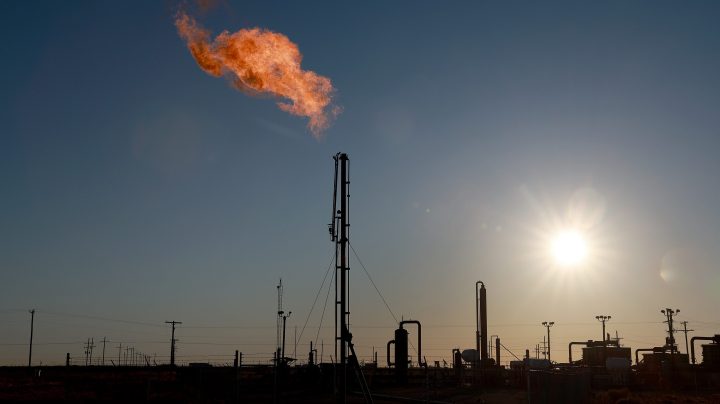
As natural gas prices rise, should we send less of it abroad?
As natural gas prices rise, should we send less of it abroad?

Earlier this week natural gas prices in the United States rose to just over $8 per million British thermal units, their highest level since 2008, around the time of the shale boom. That price was down a bit Thursday, but still about double what it was this time last year.
That’s because many Western nations stopped buying oil and gas from Russia after its invasion of Ukraine. The boycott has eliminated a chunk of supply, pushing up prices, and the United States is sending record amounts of liquefied natural gas overseas.
Some are asking if the U.S. should hold on to more of the LNG it’s been exporting to keep down energy costs at home.
Liquefied natural gas producers in the U.S. want to cash in on higher prices, said Trey Cowan at the Institute for Energy Economics and Financial Analysis.
“You’ve gotten more bidders for the commodity — in this case, LNG — you got more bidders for it, and that drives up the price,” Cowan said.
And it drives up the price of natural gas in the U.S. too. Natural gas isn’t quite a global commodity like oil is, but more and more, we’re seeing that international prices affect what we pay here.
Anna Mikulska at Rice University said we’re also not just sending liquified gas overseas.
“Everybody keeps thinking about LNG exports, but we are actually exporting quite a lot of gas via pipeline, mostly to Mexico,” she said.
Those export contracts are often in 20-year increments, so beyond a natural disaster, it’s tough for a natural gas producer to just stop exporting and keep more gas at home to drive down the price.
A big part of the problem is that supply isn’t reacting to $100-a-barrel oil like it has in the past.
And investors are more geared for short-term returns, said Stewart Glickman, an equity analyst at CFRA. There are other factors preventing oil companies from ramping up production quickly.
“Pipe is more expensive and harder to come by,” Glickman said. “Steel is more expensive. Labor is harder to find.”
Beyond supply constraints, demand is different now too. In the past, U.S. power plants would often switch to burning coal when the price of natural gas reached about $3.50.
Robert Johnston, senior research scholar at Columbia University, said that’s not happening these days for two reasons.
“One is that we have shut in a fair amount of coal-fired power plants. The other is that coal is also in short supply and high priced as well. So the economics of switching from gas to coal have not been that great either,” Johnston said.
That’s beside the environmental concerns of burning coal, as well.
There’s a lot happening in the world. Through it all, Marketplace is here for you.
You rely on Marketplace to break down the world’s events and tell you how it affects you in a fact-based, approachable way. We rely on your financial support to keep making that possible.
Your donation today powers the independent journalism that you rely on. For just $5/month, you can help sustain Marketplace so we can keep reporting on the things that matter to you.











